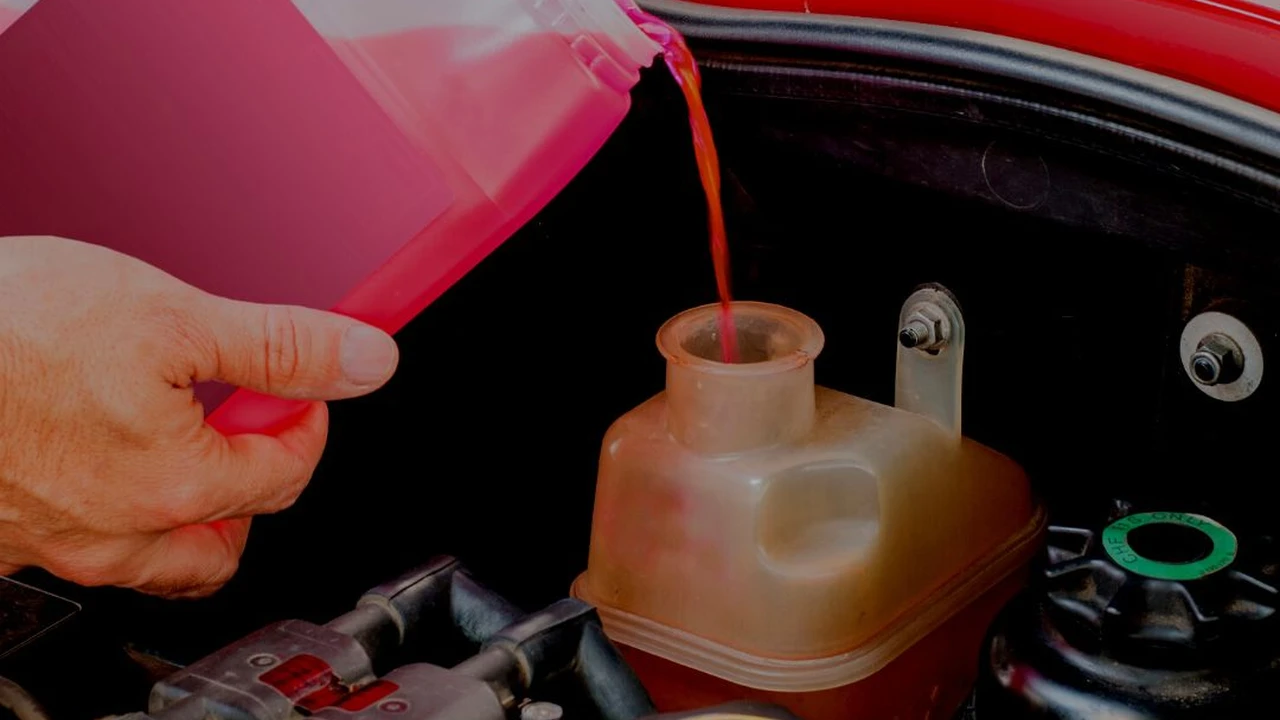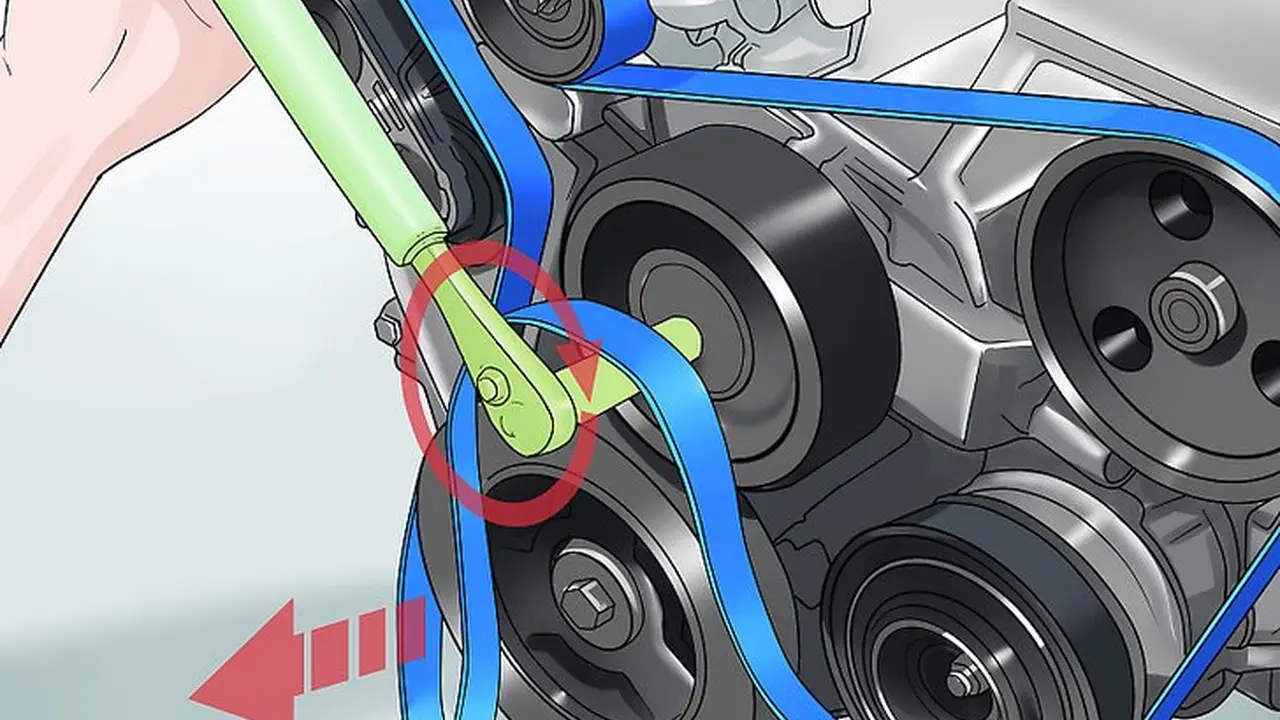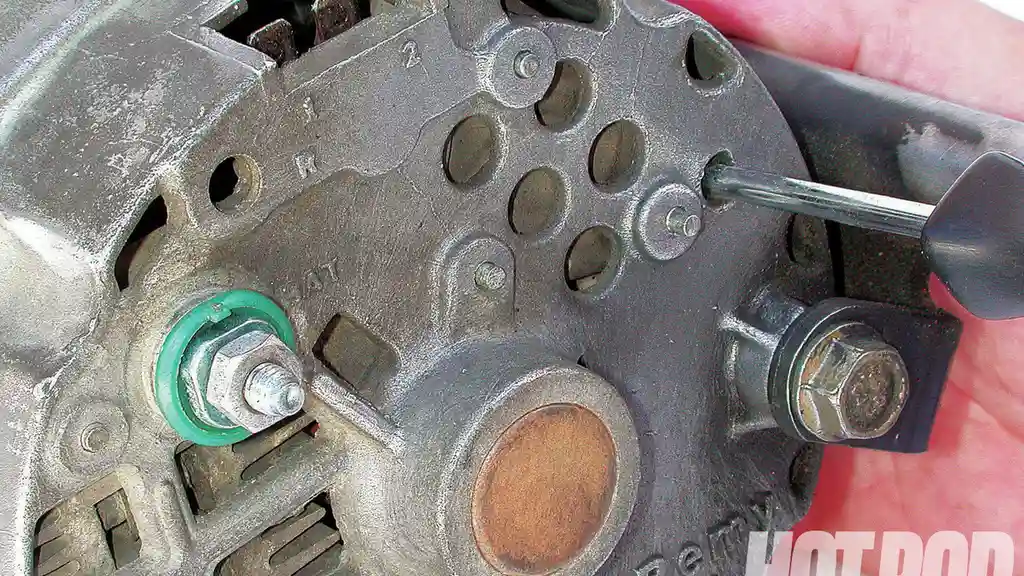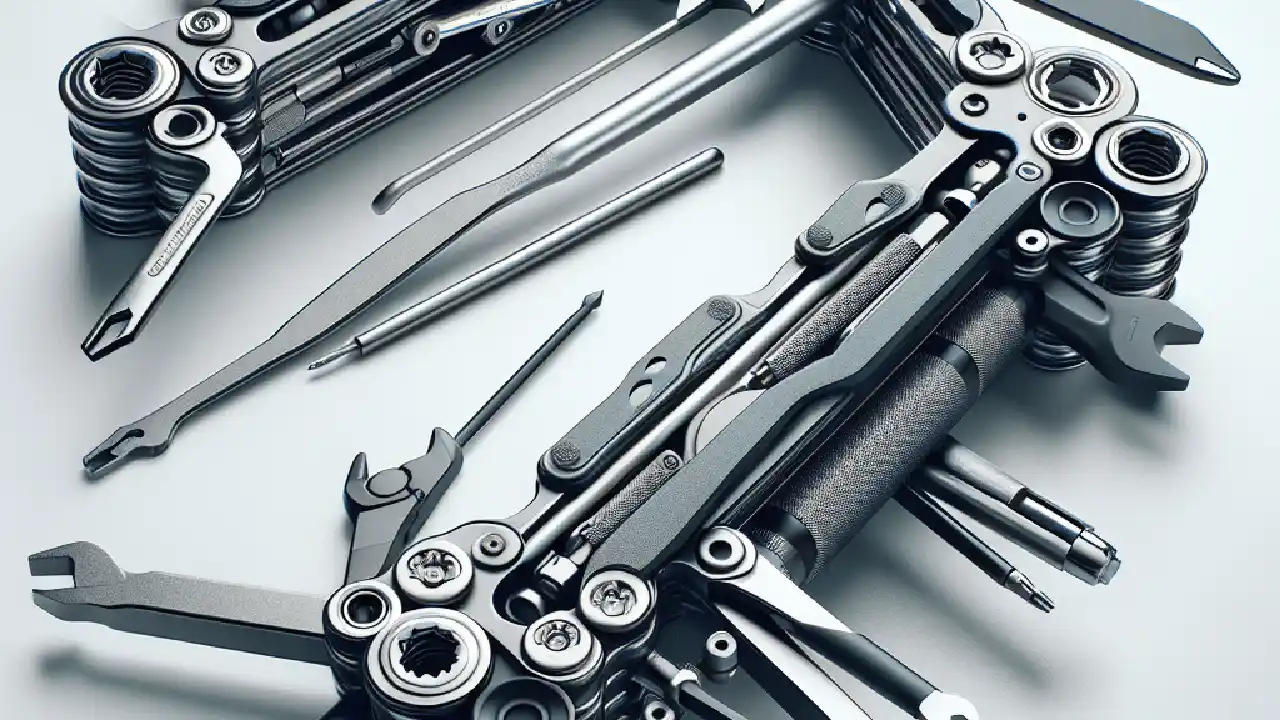Checking Your Car's Fluid Levels: Preventing Engine Damage

Why Checking Your Car Fluids is Essential for Engine Health and Longevity
Alright, let's talk about something super important, but often overlooked: checking your car's fluid levels. Think of your car like your body. It needs fluids to function properly. If you don't hydrate, you're going to feel sluggish, right? Same goes for your car. Neglecting your fluids can lead to some seriously expensive engine damage. We're talking potentially thousands of dollars in repairs. This isn't just about being a responsible car owner; it's about saving yourself a whole lot of money and stress down the road.
Regularly checking your car's fluids is a simple preventative measure that can dramatically extend the life of your engine. It helps identify potential problems early on, before they escalate into major issues. For example, low coolant can cause overheating, leading to a blown head gasket. Low oil can cause catastrophic engine failure. See? Big problems from small oversights.
Understanding the Different Types of Car Fluids and Their Functions
Okay, so what fluids are we even talking about? Let's break it down:
- Engine Oil: This is the lifeblood of your engine. It lubricates all the moving parts, reduces friction, and helps keep things cool. Think of it as the oil that keeps your engine running smoothly.
- Coolant (Antifreeze): This helps regulate your engine's temperature, preventing it from overheating in the summer and freezing in the winter. It's a mixture of water and antifreeze.
- Brake Fluid: This is what allows you to stop! It transmits the pressure from your brake pedal to your brakes.
- Power Steering Fluid: This makes it easier to turn the steering wheel. Without it, steering would be a real workout.
- Transmission Fluid: This lubricates the gears in your transmission, allowing them to shift smoothly. Automatic transmissions use a different fluid than manual transmissions.
- Windshield Washer Fluid: This helps keep your windshield clean, improving visibility. Don't underestimate this one, especially in bad weather!
Step-by-Step Guide to Checking Your Car's Fluid Levels
Alright, let's get practical. Here's how to check each fluid:
Checking Engine Oil: A Simple Guide for Car Owners
This is one of the easiest and most important checks you can do. You'll need a clean rag or paper towel.
- Park on a level surface: This is crucial for an accurate reading.
- Turn off the engine and let it cool down for a few minutes: This allows the oil to settle back into the oil pan.
- Locate the dipstick: It usually has a brightly colored handle and is marked with an oil can symbol. Check your owner's manual if you're not sure where it is.
- Pull out the dipstick and wipe it clean: Use your rag or paper towel.
- Reinsert the dipstick fully: Make sure it's all the way in.
- Pull it out again and check the level: The dipstick will have markings indicating the "full" and "low" levels. The oil level should be between these two marks.
- Add oil if needed: If the level is low, add the correct type of oil (check your owner's manual) in small increments, rechecking the level after each addition. Don't overfill!
Checking Coolant (Antifreeze): Ensuring Optimal Engine Temperature
Important: Never open the coolant reservoir cap when the engine is hot. The system is pressurized, and you could get seriously burned.
- Locate the coolant reservoir: It's usually a translucent plastic container near the radiator.
- Check the level: There will be markings on the reservoir indicating the "full" and "low" levels. The coolant level should be between these two marks.
- Add coolant if needed: If the level is low, add a 50/50 mixture of coolant and distilled water. Use the correct type of coolant for your car (check your owner's manual).
Checking Brake Fluid: Maintaining Safe Braking Performance
Brake fluid is usually in a translucent reservoir near the brake master cylinder. Check your owner’s manual for the exact location.
- Locate the brake fluid reservoir: It's usually a small, clear plastic container near the back of the engine bay, often near the brake master cylinder.
- Check the level: There will be markings on the reservoir indicating the "full" and "low" levels. The brake fluid level should be between these two marks.
- Note the color: Brake fluid should be a light amber color. If it’s dark brown or black, it’s time to flush and replace it.
- Add brake fluid if needed: If the level is low, add the correct type of brake fluid (check your owner's manual). Be careful not to spill any on painted surfaces, as it can damage them. If the level is consistently low, have your brakes inspected for leaks.
Checking Power Steering Fluid: Ensuring Smooth Steering
Power steering fluid is typically located in a reservoir with a steering wheel icon on the cap.
- Locate the power steering fluid reservoir: It's usually a small, black or clear plastic container near the power steering pump.
- Check the level: There will be markings on the reservoir indicating the "full" and "low" levels. Some reservoirs have separate markings for "cold" and "hot" levels. Check the level when the engine is cold.
- Add power steering fluid if needed: If the level is low, add the correct type of power steering fluid (check your owner's manual).
Checking Transmission Fluid: Maintaining Smooth Gear Shifts
Checking transmission fluid varies depending on whether you have an automatic or manual transmission. Automatic transmissions often have a dipstick, while manual transmissions usually require you to remove a fill plug.
Checking Automatic Transmission Fluid
- Start the engine and let it warm up: Shift through all the gears (P, R, N, D) and then put it back in park (P).
- Locate the transmission fluid dipstick: It's usually located near the engine and is often marked with a transmission symbol. Check your owner's manual if you're not sure where it is.
- Pull out the dipstick and wipe it clean: Use a clean rag or paper towel.
- Reinsert the dipstick fully: Make sure it's all the way in.
- Pull it out again and check the level: The dipstick will have markings indicating the "full" and "low" levels. There may be separate markings for "cold" and "hot" levels. The fluid level should be between these two marks.
- Add transmission fluid if needed: If the level is low, add the correct type of transmission fluid (check your owner's manual) using a funnel. Don't overfill!
Checking Manual Transmission Fluid
This is a bit more involved and may require some tools. It's generally best left to a professional if you're not comfortable working on cars.
- Locate the fill plug: It's usually located on the side of the transmission. Check your owner's manual for the exact location.
- Remove the fill plug: You may need a wrench or socket to do this.
- Check the level: The fluid level should be right at the bottom of the fill plug hole. You can use your finger or a small dipstick to check.
- Add transmission fluid if needed: If the level is low, add the correct type of transmission fluid (check your owner's manual) using a pump or syringe.
- Reinstall the fill plug: Make sure it's tight.
Checking Windshield Washer Fluid: Maintaining Clear Visibility
This one's easy! Just look for the reservoir with a windshield wiper symbol on the cap.
- Locate the windshield washer fluid reservoir: It's usually a translucent plastic container near the front of the engine bay.
- Check the level: The reservoir is usually translucent, so you can easily see the fluid level.
- Add windshield washer fluid if needed: Fill the reservoir to the top. Use a good quality windshield washer fluid that is designed to remove bugs and grime.
Recommended Fluid Products and Their Uses
So, you know *how* to check, but what *should* you use? Here are some recommendations based on different needs and budgets. Remember to ALWAYS consult your owner's manual to confirm the correct fluid specifications for your vehicle!
Engine Oil Recommendations: Choosing the Right Oil for Your Car
Castrol Edge High Mileage: Best Overall Oil for Older Vehicles
Description: Castrol Edge High Mileage is a synthetic blend oil specifically formulated for vehicles with over 75,000 miles. It contains additives that help to seal leaks, reduce oil consumption, and clean sludge deposits. Use Case: Ideal for older cars that may be experiencing oil leaks or burning oil. Comparison: Compared to conventional oils, Castrol Edge High Mileage provides superior protection against wear and tear. Compared to other synthetic blends, it offers a more robust additive package specifically designed for high-mileage vehicles. Price: Approximately $30-$40 per 5-quart jug.
Mobil 1 Synthetic: Best Full Synthetic Oil for Performance and Protection
Description: Mobil 1 is a full synthetic oil known for its exceptional performance and protection. It provides superior wear protection, even in extreme conditions. Use Case: Excellent for newer vehicles or those that require a full synthetic oil. Also suitable for high-performance vehicles or those driven in demanding conditions. Comparison: Compared to synthetic blends, Mobil 1 offers superior protection against wear and tear and better resistance to thermal breakdown. Compared to other full synthetics, Mobil 1 is a well-established and trusted brand with a long history of performance. Price: Approximately $35-$45 per 5-quart jug.
Valvoline Daily Protection: Best Budget-Friendly Oil
Description: Valvoline Daily Protection is a conventional motor oil that provides reliable protection at an affordable price. Use Case: Suitable for older vehicles or those that don't require synthetic oil. Good for drivers on a tight budget. Comparison: Compared to synthetic oils, Valvoline Daily Protection provides less protection against wear and tear and thermal breakdown. However, it's a perfectly acceptable option for vehicles that don't require synthetic oil. Price: Approximately $20-$30 per 5-quart jug.
Coolant (Antifreeze) Recommendations: Keeping Your Engine Cool
Prestone All Vehicles: Universal Coolant for Convenience
Description: Prestone All Vehicles coolant is a universal coolant that is compatible with all makes and models of vehicles. It's designed to protect against corrosion and freezing. Use Case: Ideal for those who want a single coolant that can be used in multiple vehicles. Comparison: Compared to specific coolants, Prestone All Vehicles may not offer the same level of protection against corrosion for certain metals. However, it's a convenient and widely available option. Price: Approximately $15-$25 per gallon.
Zerex Asian Vehicle: Specifically Formulated for Asian Vehicles
Description: Zerex Asian Vehicle coolant is specifically formulated for Asian vehicles, such as Toyota, Honda, and Nissan. It contains specific additives that protect the metals used in these vehicles' cooling systems. Use Case: Recommended for Asian vehicles to ensure optimal protection against corrosion. Comparison: Compared to universal coolants, Zerex Asian Vehicle offers superior protection against corrosion for Asian vehicles. Price: Approximately $20-$30 per gallon.
Brake Fluid Recommendations: Ensuring Safe Stopping Power
Prestone DOT 4 Synthetic Brake Fluid: Enhanced Performance and Safety
Description: Prestone DOT 4 Synthetic Brake Fluid offers improved performance over DOT 3 fluids, including a higher boiling point, providing improved braking performance and safety, especially in high-performance or heavy-duty applications. Use Case: Recommended for vehicles that specify DOT 4 brake fluid or for those seeking an upgrade over DOT 3. Comparison: DOT 4 brake fluid has a higher boiling point than DOT 3, which reduces the risk of brake fade. Price: Approximately $10-$15 per quart.
Valvoline DOT 3 Brake Fluid: Reliable and Affordable
Description: Valvoline DOT 3 Brake Fluid is a reliable and affordable option for vehicles that specify DOT 3 brake fluid. Use Case: Suitable for most older vehicles or those that don't require DOT 4 fluid. Comparison: Less expensive than DOT 4 but has a lower boiling point. Price: Approximately $8-$12 per quart.
Power Steering Fluid Recommendations: Smooth Steering Operation
Prestone Power Steering Fluid: Universal and Reliable
Description: Prestone Power Steering Fluid is a universal fluid that is compatible with most vehicles. It helps to prevent wear and tear on power steering components. Use Case: Suitable for most vehicles that use conventional power steering fluid. Comparison: Compared to specific power steering fluids, Prestone Power Steering Fluid may not offer the same level of performance in certain vehicles. Price: Approximately $8-$12 per quart.
Honda Power Steering Fluid: Specifically Formulated for Honda Vehicles
Description: Honda Power Steering Fluid is specifically formulated for Honda vehicles. It contains specific additives that protect the power steering system. Use Case: Recommended for Honda vehicles to ensure optimal performance and protection. Comparison: Compared to universal power steering fluids, Honda Power Steering Fluid offers superior performance in Honda vehicles. Price: Approximately $15-$20 per quart.
Transmission Fluid Recommendations: Smooth Gear Shifting
Valvoline MaxLife Multi-Vehicle ATF: Versatile and Protective
Description: Valvoline MaxLife Multi-Vehicle ATF is a synthetic blend automatic transmission fluid that is compatible with a wide range of vehicles. It helps to improve shift quality and protect against wear and tear. Use Case: Suitable for most automatic transmissions, especially those with higher mileage. Comparison: Compared to conventional ATFs, Valvoline MaxLife Multi-Vehicle ATF offers superior protection and performance. Always check your owner's manual to ensure compatibility. Price: Approximately $10-$15 per quart.
Genuine OEM Transmission Fluid: The Safest Bet
Description: Using the genuine OEM (Original Equipment Manufacturer) transmission fluid specified in your owner's manual is always the safest bet. Use Case: Ensures optimal performance and compatibility with your specific transmission. Comparison: While more expensive, using OEM fluid eliminates any guesswork and guarantees compatibility. Price: Varies depending on the make and model of your vehicle.
Troubleshooting Common Fluid Level Problems and Symptoms
Okay, so you've checked your fluids. What if something isn't quite right? Here are some common problems and what they might indicate:
- Low Oil Level: This could indicate an oil leak or excessive oil consumption. Check for leaks around the engine and monitor your oil level closely.
- Low Coolant Level: This could indicate a coolant leak. Check for leaks around the radiator, hoses, and water pump. Also, check for white smoke coming from the exhaust, which could indicate a head gasket leak.
- Low Brake Fluid Level: This almost always indicates a brake leak. Have your brakes inspected immediately. Don't drive if your brake fluid level is critically low.
- Low Power Steering Fluid Level: This could indicate a leak in the power steering system. Check for leaks around the power steering pump, hoses, and steering rack.
- Low Transmission Fluid Level: This could indicate a transmission leak. Check for leaks around the transmission pan and seals.
- Dirty or Discolored Fluids: This could indicate that the fluid is old and needs to be changed. Dirty oil can cause engine damage. Dark brake fluid can lead to brake failure.
The Importance of Regular Fluid Changes and Maintenance
Checking your fluids is great, but it's not enough. You also need to change your fluids regularly according to your car's maintenance schedule. This helps to keep your car running smoothly and prevent costly repairs. Your owner's manual will have specific recommendations for fluid change intervals.
Think of it like this: You wouldn't wear the same clothes every day without washing them, right? Your car's fluids are the same. They get dirty and break down over time, losing their effectiveness. Regular fluid changes are essential for maintaining your car's performance and reliability.
DIY vs Professional Fluid Checks and Changes: Knowing When to Seek Help
Checking your fluids is something most people can do themselves. However, changing fluids can be a bit more involved and may require some tools and expertise. Here's a general guideline:
- DIY: Checking fluid levels, adding windshield washer fluid, adding small amounts of oil or coolant (if you know the cause of the low level) are all good DIY projects.
- Professional: Changing oil, changing coolant, flushing brake fluid, changing transmission fluid (especially on complex transmissions), and diagnosing and repairing fluid leaks are best left to professionals.
If you're not comfortable working on cars, or if you're not sure how to do something, it's always best to seek help from a qualified mechanic. It's better to be safe than sorry!
:max_bytes(150000):strip_icc()/277019-baked-pork-chops-with-cream-of-mushroom-soup-DDMFS-beauty-4x3-BG-7505-5762b731cf30447d9cbbbbbf387beafa.jpg)






